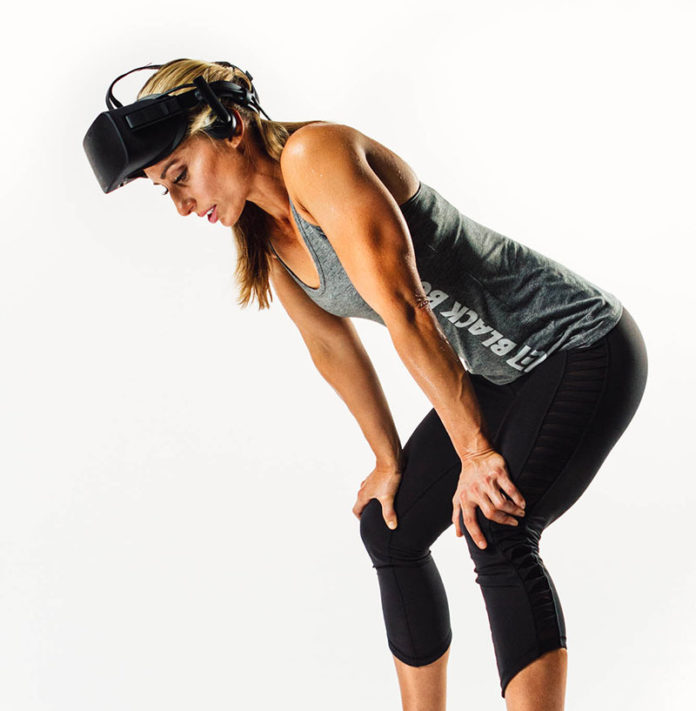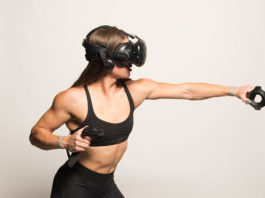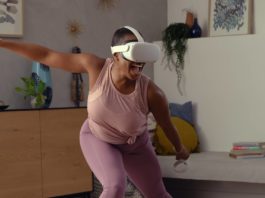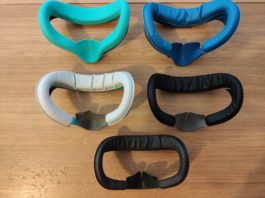You finally brought home your new VR headset, and you rushed to your computer (or PS4) like a kid on Christmas morning to set it up. Naturally, you jumped into a game and started playing. But 10-30 minutes into your first VR session, it was already too late; motion sickness had arrived to ruin your fun!
Motion sickness is a common thing for people who aren’t accustomed to mixed signals acting on their inner ear while receiving information from multiple sources of motion. Simply put: If you’re experiencing motion sickness, it’s because your inner ear can’t tell whether you’re moving or not moving. Luckily, there are some things you can do to alleviate the symptoms of motion sickness or even delay it from occurring in the first place.
1. Run or Walk In Place
Running or walking in place is a way to tell your inner ear that you’re moving the same way that the rest of your virtual “body” is moving. It’s a simple gesture that also helps you burn loads of calories while you play. And it makes artificial movement in games such as Rec Royale feel more natural.
Be warned though: This trick works best when you’re simulating smooth motion in an open gameplay space. A prime example here would be a game like Skyrim VR, OrbusVR, Rec Room, or Pavlov VR. This is why I always plug Natural Locomotion whenever possible. It’s a piece of software which you can find on Steam that lets you activate artificial motion in VR games by pumping your arms; a tactic for fighting motion sickness that goes well with running in place. It absolutely deserves a shout-out here.
Tip: If you run or walk in place while your avatar is standing still, you’ll obviously get more exercise—but it may not alleviate any motion sickness you’re experiencing. If you’re dealing with motion sickness in a stationary game, you’re probably dealing with game performance issues. Read below for more info.
2. Err in Favor of Stationary Games, Snap Turns and Teleportation
VR has plenty of excellent games that are built around small areas that fit the exact size of your playspace. SUPERHOT, BOXVR, Beat Saber and The Thrill of the Fight are perfect examples of stationary games that generally won’t induce motion sickness because there’s no artificial motion to speak of.
Stationary games also have one major thing in common: a fixed point of reference. You aren’t constantly forcing your inner ear to adapt to a whole bunch of artificial motion, because the gameplay comes to you.
Many free-movement games have locomotion settings that allow you to teleport around the game world. Generally speaking, playing with teleportation and narrowed vision settings tends to be easier on your stomach if you’re prone to motion sickness.
Even if you’re playing a free-movement game that doesn’t offer teleportation as a form of movement, you can still use snap-turning. While not as helpful for fending off motion sickness, snap-turning should make the experience of turning artificially in VR less jarring for you.
3. Build Up a Tolerance
To gradually build a tolerance over time, you should play games with smooth motion for small periods each day.
Start small. Run around inside of your game of choice with smooth motion turned on. Once you’re comfortable with it, turn on smooth-turning and get used to moving around without any snap-turns or teleportation.
Note that you don’t want to let yourself hit the point of no return (by inducing motion sickness) each time. Instead, enable smooth controls for whatever limited amount of time you’re able to withstand playing VR without getting sick. Once you’re sick, there’s no going back. But, if you train yourself to get used to artificial motion in VR, you’ll increase your tolerance until VR play is natural – or at least less stressful.
4. Take Supplements That Fight Motion Sickness
There are a few food items and supplements you can ingest to fight motion sickness. Here are some recommendations:
1. Mint
If you’ve flown on planes often, then you might know that if you experience motion sickness during the landing procedure, you’re traditionally told to chew mint-flavored chewing gum.
You can use the same logic when approaching motion sickness in VR. A mint-flavored candy or stick of chewing gum should help you feel better when you’ve induced motion sickness. You can also use mint as a preventative measure to ward off motion sickness before it strikes.
2. Ginger Root
Like mint, ginger root is a world-famous digestive aid that helps with motion sickness. You can take it in the form of candy or ginger ale, but make sure that you’re getting real ginger. Ginger “flavoring” won’t cut it for aiding against motion sickness.
Tip: You can also get a healthy dosage of ginger from tablets that contain ginger root.
3. Dramamine
This antihistamine is best used for fighting nausea, vomiting, and dizziness. All of which are symptoms of motion sickness. Here’s a list of side-effects and general precautions to look out for when you’re eyeing up the Dramamine bottles at the local pharmacy.
5. Tweak Your PC Performance
Sometimes, your experience in a VR game is determined by the horsepower of the system you’re using to run it. This means that, at least on PC VR, you’ll need to tweak your graphics settings in each game to keep things running smoothly.
As a rule of thumb, overloading your system with overly high graphics settings that it can’t actually handle rendering to two ‘eyes’ simultaneously will cause your game to run at a framerate below the “minimum” 60 frames per second recommended for a smooth experience.
When possible, turn off Supersampling (SSAA) and decrease other graphical settings in your game, where available, until it stops being jittery.
6. Hunt Down an Omnidirectional Treadmill
We’ve always dreamed of playing VR games with one of the fancy new omnidirectional treadmills that are trickling into the market. Generally, they don’t come cheap—but if you have (a little patience and) the equivalent to a few thousand USD, they’re said to offer the most immersion possible.
Be prepared, however, to do more homework than hopping over to a digital shopping cart and clicking ‘buy’.
Most omnidirectional treadmills are still in the early phase of their consumer rollout. You might have to send some emails to relevant PR people just to get your hands on one of these in a backroom product demo, let alone start a conversation about purchasing one for your home. However, the tradeoffs between using thumbsticks to move around vs the tight control and physical immersion of an omnidirectional treadmill should be apparent here.
Since an omnidirectional treadmill is activated by your legs and feet, in-game motion won’t feel nearly as artificial as if you were using a thumbstick to move around.
According to Michael Abrash, motion sickness affects almost 80% of people who try VR. Beyond ruining your own experience, there’s no doubt that motion sickness is hurting the accessibility of VR for many other people who also want to play games and exercise in VR. That said, it may be useful to pay attention to some of the resources we’ve listed above.
How do you fight VR-induced motion sickness? Please let us know in the comments.




